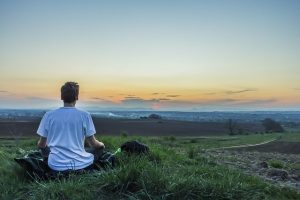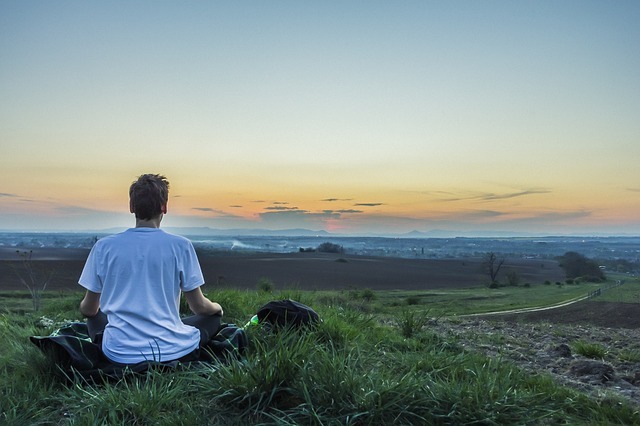 What do I mean by Recovery? Recovery is the process of being able to consistently abstain from a problematic substance or behavior, to correct control over behaviors that damage personal relationships, and to repair dysfunctional emotional responses. (Adapted from the American Society of Addiction Medicine’s definition of addiction.) In finding control over behaviors we also refer to realigning damaging thought patterns to be more sattvic, or harmonious and kind. Negative thoughts negatively impact our ability to grow and thrive. These negative samskara, habits of the mind, may result from being in a relationship with an addict as well as being in active addiction oneself. Recovery is a life-long journey as a person continually adapts to life’s challenges without resorting to the comfort of the addition or addictive process. Recovery is not a situational response to consequences from the addiction; it is a decision to abstain and refrain along with a plan to repair relationships with others and with one’s self. Abstinence alone is seldom sufficient to sustain long-term recovery.
What do I mean by Recovery? Recovery is the process of being able to consistently abstain from a problematic substance or behavior, to correct control over behaviors that damage personal relationships, and to repair dysfunctional emotional responses. (Adapted from the American Society of Addiction Medicine’s definition of addiction.) In finding control over behaviors we also refer to realigning damaging thought patterns to be more sattvic, or harmonious and kind. Negative thoughts negatively impact our ability to grow and thrive. These negative samskara, habits of the mind, may result from being in a relationship with an addict as well as being in active addiction oneself. Recovery is a life-long journey as a person continually adapts to life’s challenges without resorting to the comfort of the addition or addictive process. Recovery is not a situational response to consequences from the addiction; it is a decision to abstain and refrain along with a plan to repair relationships with others and with one’s self. Abstinence alone is seldom sufficient to sustain long-term recovery.
A community of like minded people is needed to avoid isolation, a plan for repairing relationships is needed to remove the shame, the blame, the guilt and to build self esteem, and there needs to be a plan to build a life without the veil over the true self that the use of substances or behaviors provides. Building such a life takes the development and practice of tools for healthy coping behavior. These tools are gathered on the path of recovery, and practiced over and over again in order to have them at the ready when crisis occur.
Where does yoga fit in?Everywhere! While a yoga practice may be a way for one to avoid looking at one’s addiction, some describe a physical yoga practice as an addiction. In this case, yoga ultimately will not serve recovery. Yoga can be a gateway to admitting that one is out of balance, in disharmony and unwell. This admission is the first step to coming to terms with it. This awareness can lead to finding support to get help and guidance and finding the path to the true self.
Yoga includes breath work (calming and integrating). In yoga, you are invited to develop a steady practice of discovering and utilizing the breath in various ways. Breath can soothe the body and calm the mind. A brain that is not in stress can find healthy solutions to challenges in the moment. The breath can provide a way to become calm, and from this calm make good choices. Yoga includes meditation. Meditation is an important tool in healing the neural pathways and the brain. The brain physiology changes with consistent meditation: areas that had been damaged through addictive behaviors and substances repair themselves.
This information is tremendously important. It is not a rapid process. It is documented in several sources with more available every day:Mindfulness Meditation & Addiction; Causes for addiction and how mindfulness meditation can help with them. Published on April 16, 2010 by Ronald Alexander, Ph.D. in The Wise Open Mind) Psychology Today and Your Brain on Meditation, August 20, 2013 by Judson Brewer; Mind Life Institute and continued work with Yale Therapeutic Neuroscience Clinic Yoga includes physical practices.
The physical practices can release the “issues in our tissues” (Nikki Myers). These are the stories, the stresses, and traumas we hold in the body itself. Tightness and knots in the muscle fibers form not just from physical events, but also from emotional and psychological trauma: incidents that were greater than the body’s ability to process them. Tension itself gets held in neck, shoulders, back and hips – and everywhere else in the body. The physical practice not only releases tension, but the tissues themselves also let go of old stories. The practitioner also gains a greater awareness of HOW ONE FEELS.
This awareness is developed as we mindfully move in and out of the poses. With attention, we can bring this awareness into “off the mat” life – to notice when the shoulders rise, the chest gets tight, the breath becomes short. With consciousness, one can then take a moment to assess what is going on, and determine if there is a need to take some kind of intervention: fuller breath, grounding, present time awareness, reaffirmation of boundaries and so on. These skills can be used when triggered to return us to the moment when other relapse prevention tools can be employed. Yoga has a philosophy. The yamas and the niyamas can become part of daily life and a commitment to oneself for an ethical life with guidance.
The yamas of non-harming, non-lying, non-stealing, non-greed and non-attachment lead one to increase self-esteem through ethical action (non-action.) Just practicing these five can keep one out of a peck of trouble and away from triggering situations. The niyamas enhance the restraints listed above through cleanliness / purity (in body, mind, spirit and relationships), through contentment and gratitude practices, through discipline, self study, and surrender. Using these values as benchmarks, one can experience the inner landscape for self-discovery. The practices of all ten lead to a higher sense of self worth and self-esteem. Yoga lineages include karma yoga, the yoga of action and consequences.
Being of service to one’s fellow is a huge way to build a sense of self-worth and a community of usefulness. Karma yoga is also expressed through the understanding that all things have consequences: good and bad. There is no way of escaping that. Allowing oneself to be a creator of the good is a huge way to build strength to avoid the triggers. Yoga is a holistic healing practice– uniting body mind and spirit as well as aligning the five koshas or bodies: the energetic, the physical, the emotional / psychological, the wisdom / intellectual and the spiritual sheaths.In the Twelve Step programs, we say we have a “physical allergy coupled with a mental obsession and a spiritual malady”. Yoga unites body, mind, and spirit and is thus positioned to be part of the perfect remedy to the disease of addiction.






